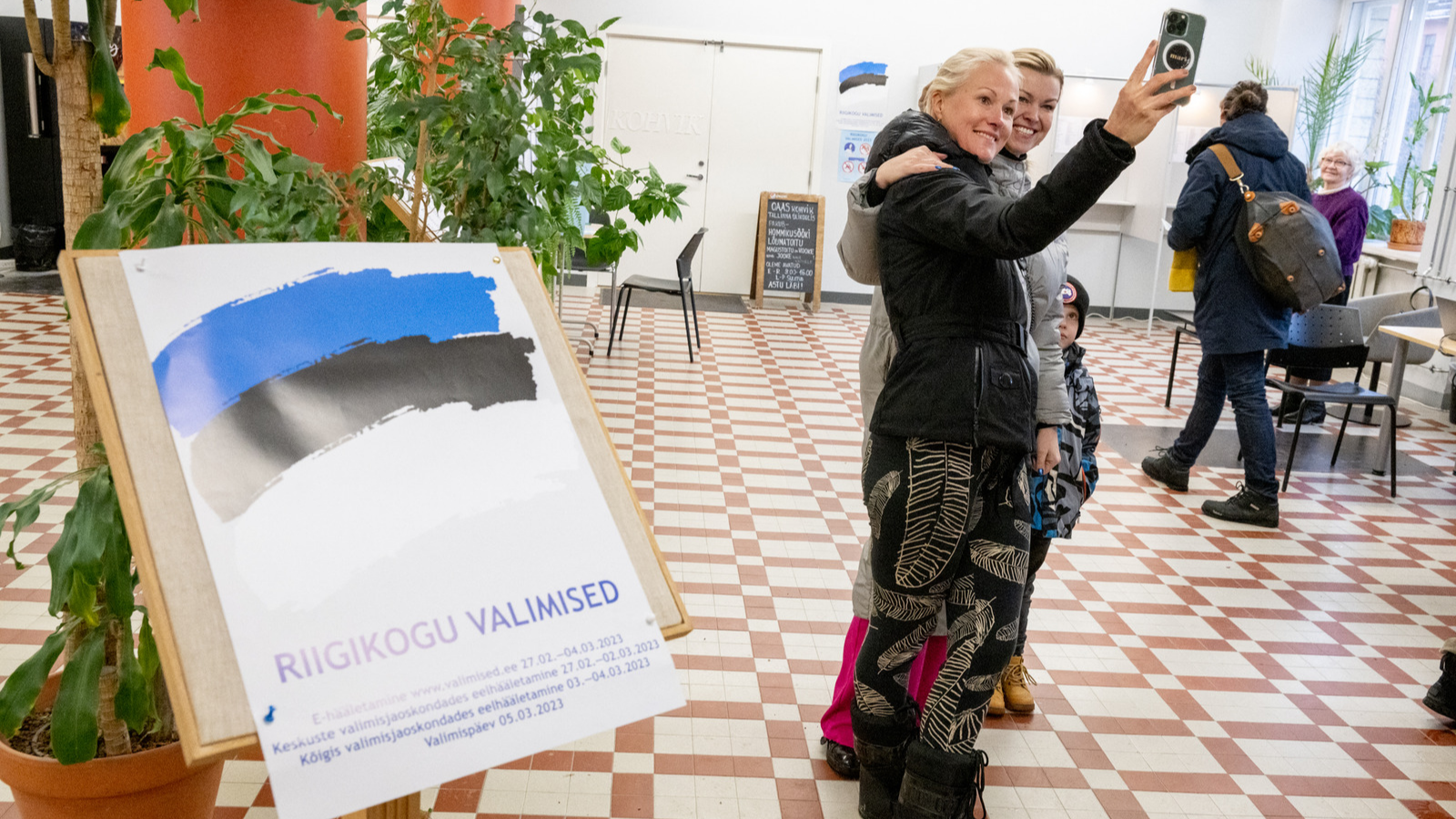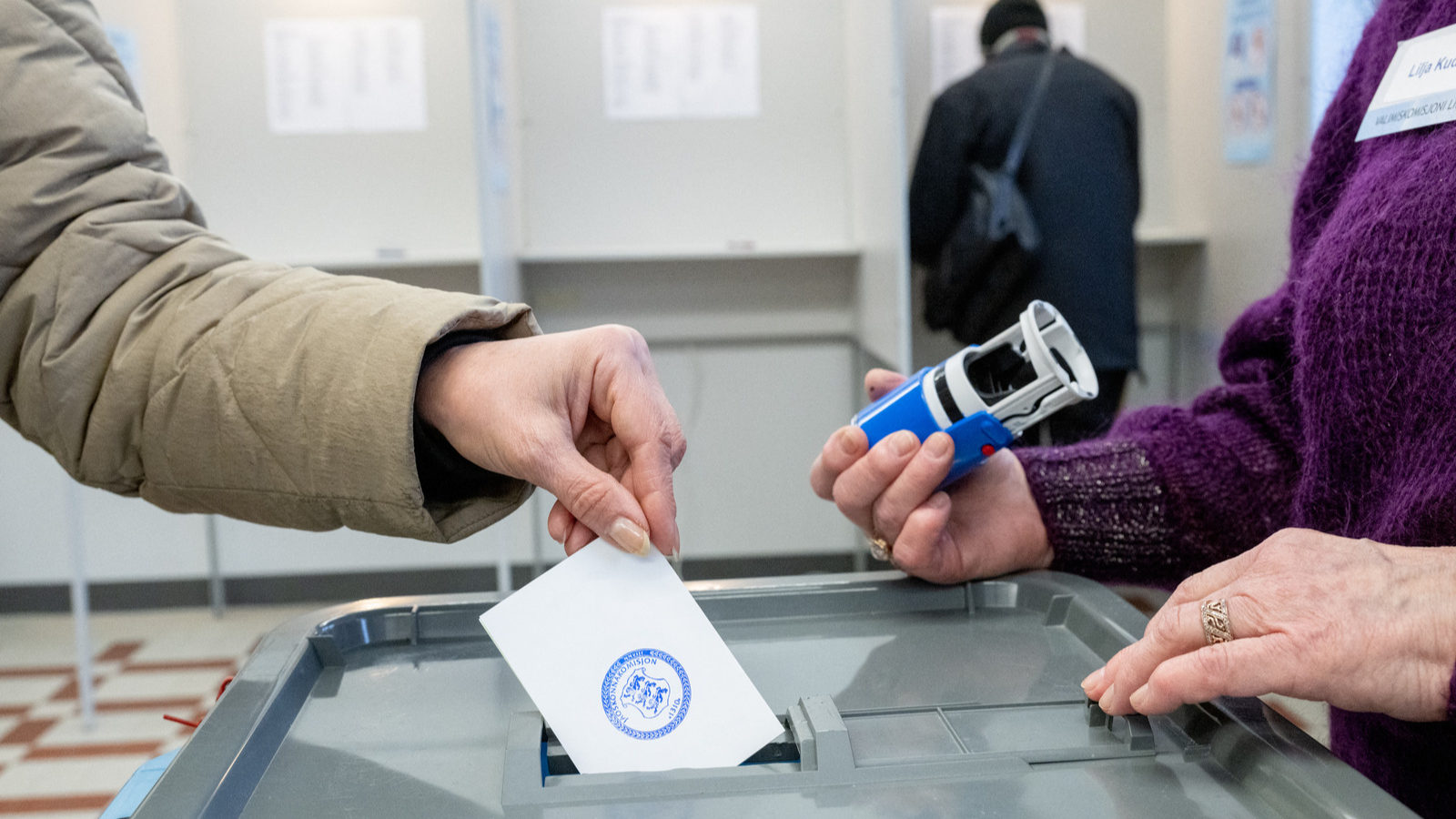
A record 313,514 Estonians used I-voting to register their vote in the 2023 general election, up from 247,232 in 2019. /AFP/Raigo Pajula.
A record 313,514 Estonians used I-voting to register their vote in the 2023 general election, up from 247,232 in 2019. /AFP/Raigo Pajula.
Estonia smashed its i-voting record on when, for the first time more than half of voters marked their ballots online during the national Parliamentary elections. Prime Minister Kaja Kallas's center-right Reform Party won the election by a wide margin on Sunday, clinching 31.6 percent of the vote.
In total 313,514 i-votes were registered, surpassing the previous Riigikogu record set in 2019, when 247, 232 people used i-voting rather than voting in person.
READ MORE
Austria is using AI to protect biodiversity
The European bison: back from the brink
Saving the world's most endangered cat
By the time polls closed at 8 p.m. on Sunday, 63.7 percent of registered voters had cast their ballot - the same as 2019. However, while the voter turnout percentage is the same as four years ago, considerably more Estonians voted this time around.
This year, all Estonians living abroad were included in the electorate. Voters from abroad also preferred to vote online, with 7,268 i-votes to 1,886 paper votes cast.

Prime Minister Kaja Kallas's center-right Reform Party won the election by a wide margin, winning 31.6% of the vote./AFP/Raigo Pajula.
Prime Minister Kaja Kallas's center-right Reform Party won the election by a wide margin, winning 31.6% of the vote./AFP/Raigo Pajula.
How does it work?
At first, in the early 2000s, it was cabinet members who used an i-voting service, allowing them to vote on agenda items while on the move. After it proved successful they rolled it out to the wider population.
The system has now been used in local, national and European elections.
Distinct from e-voting – which uses electronic devices to record votes, the Estonian i-voting system relies on a mobile app. Once downloaded, voters verify their identity using their government ID card. After voting for their preferred candidate, the user enters a pin number, akin to a digital signature, which once entered is legally binding. The voter's identity is then removed from the ballot before it reaches the National Electoral Commission for counting, thereby ensuring anonymity.

Some voters still prefer the traditional method of paper ballots, which were also at a record high./AFP/Raigo Pajula.
Some voters still prefer the traditional method of paper ballots, which were also at a record high./AFP/Raigo Pajula.
Could other countries follow suit?
For all Estonia's success, other countries have been reluctant to follow suit. Switzerland, which has had forms of digital voting since 2003 – first in its Geneva canton, before spreading elsewhere – has suspended the practice, following a campaign by computer scientists and politicians concerned by a lack of security.
For Marcus the lack of take-up is an issue of technology rather than security. I-voting technology is reliant upon government ID cards, which many countries don't have. "In the UK for example, you don't have a government ID card, you don't have a universal electronic authentication system in place."
Marcus warns that "if you don't have secure data exchange between different government authorities, then it is extremely hard."
Subscribe to Storyboard: A weekly newsletter bringing you the best of CGTN every Friday